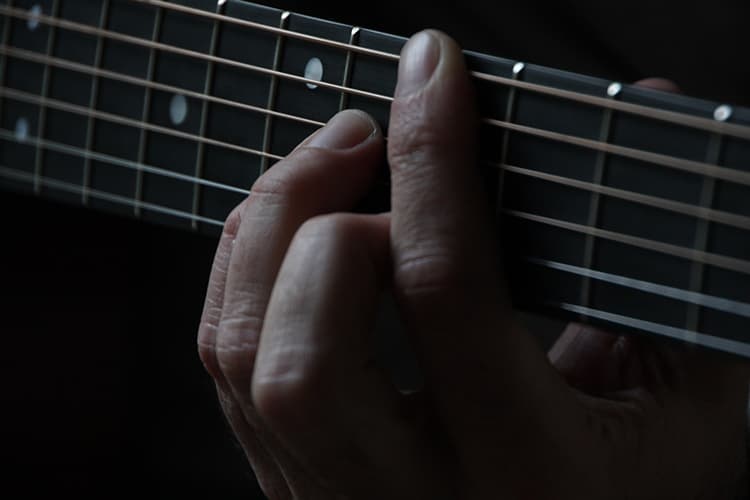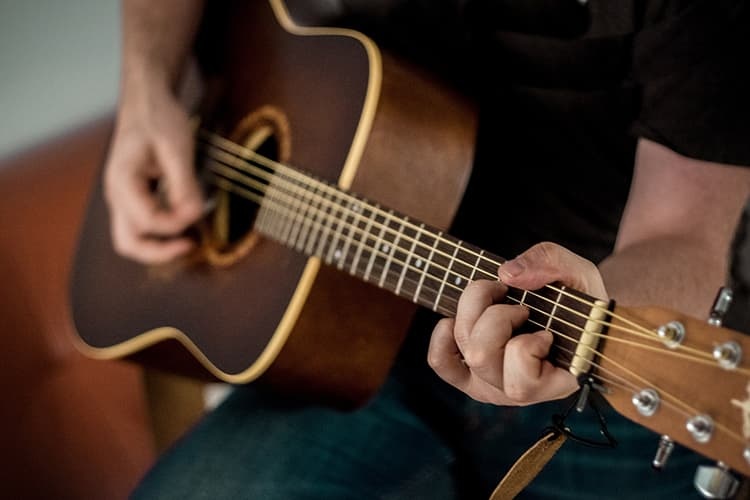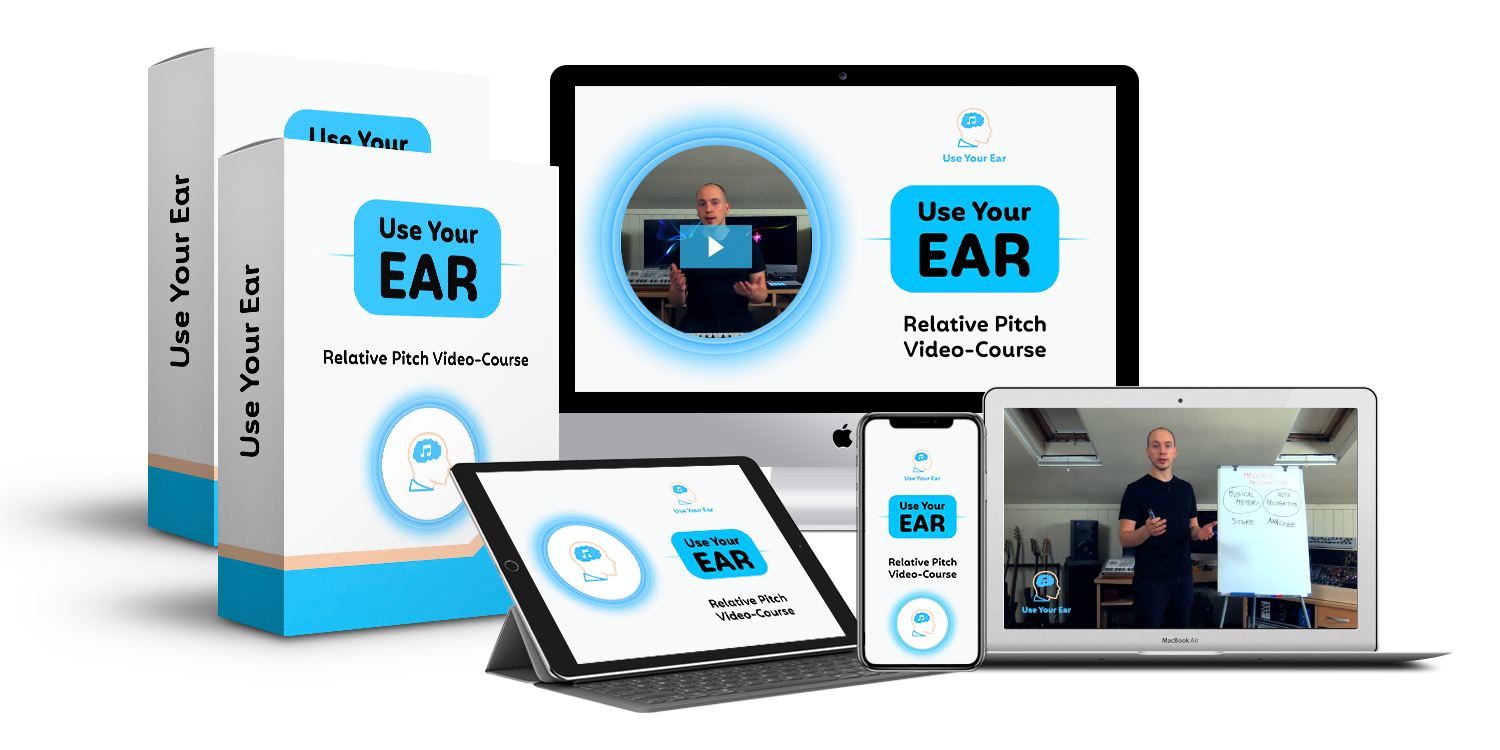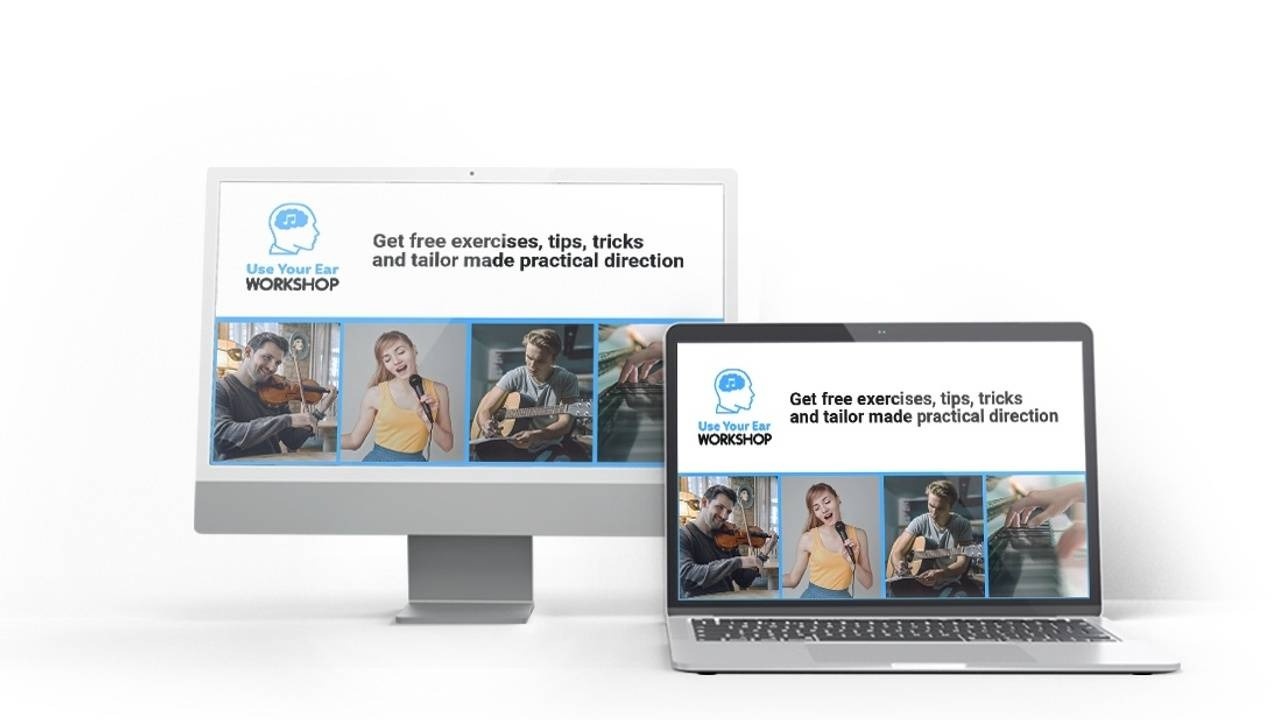Chord Ear Training
In order to be an accomplished musician, one of the most essential skills you need to develop is being able to identify chords by ear. You can develop this skill with an effective chord ear training program.
Chord Progressions
A chord progression is a series of chords that are played in a specific order. Chord progressions can be created using any combination of chords, but some progressions are more common than others.

Recognizing chord progressions VS single chord recognition
Chord ear training simply means the ability to hear a chord progression and being able to identify the chords being played. While many musicians struggle with this, great musicians use better and science-based chord ear training methods, and they are able to identify chords by ear (without the help of any musical instrument). We will get deeper into it and what it entails as we go along in this article.
On the other hand, single chord recognition often refers to only recognizing the quality of the chord (whether a chord is major, minor, major seventh, minor seventh, etc.). As we’ll see further on in this post, this ability is way less useful than fully identifying the chord, as done in chord progressions recognition exercises. So if you want to develop a great musical ear, you should focus on practicing chord progressions ear training exercises and not single chord recognition exercises.
The rules are the same also if you are learning the guitar and thinking of “guitar chords ear training” or if you are approaching “seventh chords ear training.”

Methods for determining a chord by ear
In chord ear training, there are a few different methods that you can use to determine a chord by ear. We have broadly categorized these methods into two. The zoom-in method and the zoom-out method.
The Zoom-in method
The zoom-in method is a more analytical approach, and it involves breaking down the chord into its individual notes and then trying to identify each one of them. This method can be quite tricky, inefficient, and time-consuming. For example, if a C major chord is played, you can pick out the individual notes that make up the chord, i.e., C, E, G, and with a little knowledge of music theory, you would know that the chord played is the C major chord. As you have seen, this method is analytical and takes time to process the solution. Although this is the approach used by most beginners to identify chords by ear, we don’t suggest it cause it is definitely too slow for real-time recognition of chords.
The Zoom-Out Method
The zoom-out method involves trying to identify chords by their overall sound. Here, we identify each chord as a global unit instead of trying to identify each note that makes up the chord. This method is much faster and more effective than the zoom-in method. It is also a very reliable method of recognizing chords because each chord assumes a very specific sensation depending on the function it has inside the key (the tonality of the musical piece), so we can train ourselves to internalize the different sensations chords assume within the key, and after that, we can easily recognize them when they’re played.
The zoom-out method, unlike the zoom-in method, can save you years of frustration of practicing ear training using ineffective interval ear training methods. Indeed, great musicians who can quickly recognize chords by ear don’t think at all about intervals when doing that. They just recognize the sensation of tension/resolution that the chord assumes inside the musical piece. When you’re properly trained this is more than enough to reliably recognize chords by ear, even in complex harmonic contexts like jazz and classical music.
Here are some basic skills useful when applying the zoom-out method.
- Identifying the tonic note of the chord progression.
- Having a basic internalization of the key's colors.
- Extracting the root note of a chord.
Chord ear training is about:

Identifying the chords of a song by ear (without the help of any musical instruments).

Identifying chord inversions by ear.

Developing your harmonic ear, so you form a tonal vocabulary which will take your sense of pitch and musicality to the next level.
Chord Recognition: triads, inversions, major, minor, seventh chords, and beyond
As we have made clear so far, chord recognition is easier and faster using the zoom-out method, which implies you should listen to the chords as a single unit. Once you have internalized the sensation each chord creates within the tonal context, you will be able to recognize the specific chord in whatever musical piece you are listening to. This goes irrespective of the type of chords (major, minor, seventh, etc.) or the inversion of the chords. So, counterintuitively, it’s not necessary to think about nor to recognize the quality of a chord in order to recognize it.


Chord quality recognition
Chords can be major, minor, suspended, diminished, augmented, etc. The type of chord used will greatly impact the overall sound of a given chord progression.
For example, ear training lets you know that major chords tend to sound bright and happy while minor chords sound more gloomy.
Once you internalize these emotions and sensations of the chords, you can easily identify the chord quality. However, it’s often neglected that the ability to recognize the quality of a chord is not so important in real music. This is because just knowing if a chord is major or minor does not tell you which chord it is.
For example, imagine I play 4 chords, I give you the tonic note of the progression, and I ask you to quickly play them on your instrument: You only recognize that 2 are major and 2 are minor. Is that enough for you to know which chords to play on your instrument? No, absolutely not. You still don't know where you should put your hands on the instrument.
It's much more important to quickly recognize the root note of the chords than their qualities. Indeed, by doing that, you know exactly where your hands should go on your instrument. Then since you know the key of the song, you also know whether they should be major, minor, or whatever, depending on the scale degree they're built on.
This is a good reason why you should avoid practicing chord quality recognition exercises and focus on more useful exercises instead.
Another reason why practicing chord quality recognition exercises is counterproductive is that chords are played randomly in chord quality recognition exercises. So these exercises don't establish any musical key. Consequently, you can't literally feel the tonal sensation that each chord assumes within the key, nor can you internalize it. This will prevent you from developing the ability to apply the zoom-out method. Given everything we have explained earlier in this post, you should now know that this is not a desirable consequence.


Chord inversions recognition
Many music students are concerned about easily recognizing chord inversions in real music. In our experience, we are not seeing it as a big difficulty for any student who is approaching ear training following an effective step-by-step method.
The problems with recognizing chord inversions arise when students face this aspect too early in their learning process.
It’s absolutely essential for students to be able to quickly and effortlessly recognize simple root-position chords by ear (without the help of any instruments) using the zoom-out method (described above) before they can properly recognize chord inversions.
In other words, if you’re not able to recognize chords (in root position) on the fly in a simple pop or folk song, you are not ready to face chord inversions yet. If you try to skip these necessary steps, it will be like trying to run without being able to walk; You will get frustrated and unable to achieve any results.
On the contrary, if you approach chord recognition in a true step-by-step way, as it is done in the Use Your Ear method, recognizing chord inversions on the fly won’t be a problem. That is because each inversion of a chord creates its own specific sensation within the context of the key, which is different from the sensation of the same chord in root position. So once you have internalized the sensations that chord inversions create, and how they differ from the chord in root position, you will seamlessly recognize chord inversions without any problems.
Chord ear training exercises
Many free exercises you find online are counterproductive for two major reasons. One, they are typically chord quality recognition exercises. As we said earlier, just recognizing the quality of the chord is absolutely not enough to determine which chord is being played. Two, these free chord recognition exercises you find online do not take into account how our perception of musical pitch works and include chords played randomly (no musical key is established). As a consequence, you are not going to train your ability to quickly and effortlessly recognize chords using the zoom-out method, as we suggested at the beginning of the post.
An effective chord identification ear training exercise should always help you internalize and recognize the tension/resolution sensation that each chord assumes within the key of the progression (or the song).

we can help you
We have developed an innovative ear training method that includes an in depth chord ear training program to allow you to understand, feel, and recognize chords by ear on the fly.

Relative Pitch Video-Course
In the Use Your Ear video course, you will find hours of video lessons and thousands of audio and PDF exercises. Our course is designed for students of all levels. It is a science-based, step-by-step method that will take anyone from zero to advanced ear training skills.
You will develop an instinctive sense of musicality and great confidence in yourself as a musician.
The Use Your Ear course will:
- Save you years wasted on ineffective ear training exercises.
- Put an end to your struggles in transcribing melodies and chords by ear.
- Allow you to improvise and create music that comes from your heart.
- Make it easy for you to sing or play in tune.
The Use Your Ear Relative Pitch Video Course is available now, don’t wait. Sign up now.
The Use Your Ear video course is available nowFree Use Your Ear Workshop
The free Use Your Ear workshop allows you to understand how the Use Your Ear method works, and gives you practical direction on how to setup an effective ear training routine, tailored to your specific situation.
In this three-hour-long workshop, you will:
- Discover a science-based ear training approach, which great musicians instinctively use without even knowing it.
- Get chord ear training tips and tricks to skyrocket your ability to recognize chords by ear on the fly.
- Preview our step-by-step ear training approach that will help you develop great relative pitch skills in the fastest and easiest way possible.
- Practice multiple exercises and discover the right way to practice ear training depending on your current level and individual tendencies. You will know how to improve - no more guessing.


Individual online lessons
If you would like to have a more personalized approach to ear training, we offer one-on-one private lessons with our expert ear training teachers, which are qualified to teach following the innovative principles and exercises included in the Use Your Ear method.
One-on-one ear training lessons onlineHow our students quickly learn to recognize chords by ear
Check out how our students go from zero to recognizing chord progressions by ear in a few months, following the Use Your Ear method.
The Use Your Ear video course and our other services are for:

Anyone who wants to develop their relative pitch skills.

Any musician who wants to improve their inner sense of pitch and musicality.

Anyone who struggles with recognizing chords, melodies and playing music by ear.

Anyone who wants to get better at improvising or creating their own music.

Anyone who wants to learn how to sing in tune.

Anyone who wants to improve their confidence as a musician.




